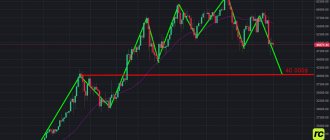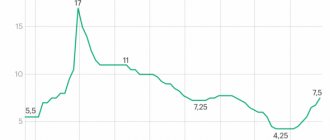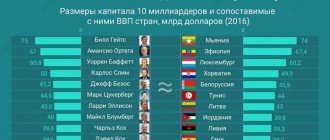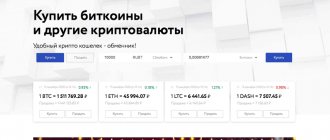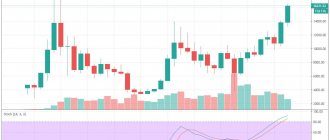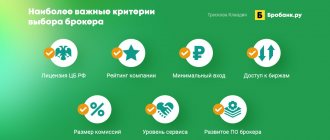Fitch Ratings is one of the most authoritative rating agencies, a representative of the Big Three (together with Moody's and Standard & Poor's). Offers services for compiling long-term and short-term credit ratings of tens of thousands of issuers - states, regions, municipalities, blue chip stock market, their stocks, bonds and other securities and derivatives.
Fitch Ratings presentation
Of all the big three, Fitch Ratings is the smallest rating agency, but its weight in the financial world is very high. The company has two large offices - in New York and London, as well as a number of regional subsidiaries, for example, Fitch Ratings Japan with an office in Tokyo.
Like Moody's, Fitch Ratings traces its history back to the founding of the publishing house. Is it any surprise that journalists founded or were at the origins of many reputable financial companies. Let's remember the famous Dow Jones Industrial Average, created by Wall Street Journal editor Charles Dow. Journalists are among the first to receive information, moving it (with their edits!) further. Thesis: whoever owns the information owns the world, no one has yet canceled it.
On December 24, 1914, Christmas Eve, publisher John Knowles Fitch founded the Fitch Publishing Company.
Fitch Publishing's financial information quickly gained popularity among analysts, brokers and investors. Brokers and traders have realized how convenient it is to use Fitch ratings to assess the prospects of investments.
Significant dates for Fitch Ratings:
- December 24, 1914 – foundation;
- 1924 - the appearance of a rating scale (AAA - maximum level of creditworthiness, D - minimum);
- 1997 - merger with the British company IBCA Limited and the transfer of control over Fitch (through ownership of a controlling stake) into the hands of the holding company Fimalac SA with its head office in Paris;
- 2000 - Fitch Ratings becomes the owner of Duff & Phelps Credit Rating and Thomson BankWatch;
- October 2006 – the emergence of Derivative Fitch, a company specializing in credit derivatives ratings;
- October 2011 – IBM buys software manufacturer Algorithmics, a subsidiary of Fitch Ratings, for $387 million;
- 2012 – Hearst Corporation becomes the owner of 50% of Fitch Ratings shares (the company has been among shareholders since 2006, but remained among minority shareholders until 2012);
- December 2014 – Hearst Corporation increases its stake in Fitch to 80%;
- April 2022 - Hearst Corporation buys the remaining stake from Fimalac and becomes the sole owner of Fitch.
Notice how the stock price of the Fitch rating company has increased in just 4 years:
- $1.965 billion – this is how much the 30% stake was worth in 2014, i.e. $65.5 million for 1% shares ;
- $2,800 billion - this is how much they paid in 2022 for a 20% stake, i.e. $140 million for 1% shares .
Unlike Moody's, whose shares under the ticker MCO are traded on the NYSE - the world's No. 1 stock exchange according to the author's rating of the Masterforex-V Academy, Fitch securities are not listed on exchanges.
Moody's Rating Action
On October 20, 2014, the rating agency Moody's Investors Service downgraded the senior debt ratings, subordinated debt ratings and deposit ratings of seven Russian financial sector companies, including Rosselkhozbank. These ratings include systemic government support. The rating actions are the result of a downgrade of the Russian Federation's rating from "Baa1" to "Baa2" while maintaining a "negative" outlook. The long-term ratings of these financial institutions are assigned a “Negative” outlook.
The ratings of OJSC Rosselkhozbank have been changed as follows:
- The long-term rating of deposits in foreign and national currencies was downgraded from “Baa3” to “Ba1”, the outlook is negative;
- The long-term rating of senior debt obligations in foreign and local currencies was downgraded from “Baa3” to “Ba1”, the outlook is negative;
- The long-term rating of subordinated debt obligations was downgraded from “Ba3” to “B1”, the outlook is stable;
- The short-term rating of deposits in foreign and national currencies was downgraded from “P-3” to “NP”;
- The financial stability rating was confirmed at E+, the outlook is negative.
On October 21, 2014, the rating agency Moody's Interfax lowered the ratings of Rosselkhozbank on the national scale from “Aaa.ru” to “Aa1.ru”.
Fitch Ratings long-term credit rating scale
Fitch's rating scale is similar in nature to the credit rating scale of other agencies. Issuers are assigned a letter code from AAA to D, where AAA is the highest level and D is the lowest level.
The investment class of financial assets includes securities of issuers with ratings:
- AAA – the highest level, maximum creditworthiness, no risk of non-payment of debts;
- AA – a very high level of creditworthiness, there are practically no credit risks, but still does not reach the AAA level;
- A – high level, but there is a risk of a change in creditworthiness during an economic crisis;
- BBB - the lowest level of investment grade, fairly high creditworthiness, but also high risks of the influence of the economic situation (high dependence on exports, the production of certain goods, a market drop in price for which will immediately affect the solvency of the issuer).
The speculative class includes ratings:
- BB – high dependence of solvency on the market situation;
- B – the financial position of the issuer is very unstable;
- SSS is highly vulnerable to the economic situation, and this does not allow us to confidently predict stability in the long term;
- СС – high speculative level, high interest rates on debt securities with a very high risk for the borrower;
- C – the ability to repay debts is partial, the issuer may be in the process of partial default, some debts may be frozen or negotiations on restructuring are underway;
- D – the company is in default, the agency believes that it is completely unable to service its debts, or is unable to service a large part of them.
Fitch Ratings also uses intermediate grades, adding + or minus to the letter code, except for the highest and lowest levels. For example, AA+, BB-, etc. This means that the issuer is still in the specified class, but is on the verge of an increase (+) or downgrade (-) in the rating.
Moody's Rating Action
On June 23, 2015, the rating agency Moody's Investors Service confirmed the ratings of 4 Russian banks, including Rosselkhozbank.
Moody's confirmed all of the Bank's ratings at the current level. Long-term deposit rating is “Ba2”, senior debt rating is “Ba2”, subordinated debt rating is “B2”, stand-alone credit rating is “b3”. The long-term ratings outlook is negative. The short-term deposit rating is rated “Not-Prime”.
Due to the very high likelihood of government support, the Bank's core ratings are created by adding 4 notes to the Bank's standalone credit rating (“b3”).
Simultaneously with the confirmation of the ratings, the agency withdrew its forecast for subordinated debt due to a change in the global methodology - in the future, forecasts will only be assigned to long-term senior debt ratings and deposit ratings.
Moody's also assigned a Counterparty Risk Assessment (CRA) to five Russian banks, including Rosselkhozbank, and two subsidiary banks, in accordance with the new methodology for assigning ratings to banks, published on March 16, 2015: https://www.moodys.com /viewresearchdoc.aspx?docid=PR_320662 Rosselkhozbank was assigned a Counterparty Risk Assessment (CRA) - “Ba1(cr)” / “NP(cr)”.
Counterparty Risk Assessment (CRA) - not a rating , this indicator is an assessment of the issuer's ability to prevent a default on operational obligations, taking into account its own stability, as well as an assessment of the likelihood of support from affiliated structures or the state and reflects the expected priority of repayment of creditors' claims upon occurrence insolvency. The CRA also considers other steps the regulator may take to preserve the bank's key operations during the bankruptcy resolution process.
This assessment may apply to the following types of obligations - payment obligations under covered bonds, derivatives, letters of credit, third party guarantees, obligations under service contracts and trusts and other similar obligations.
Estimation of the counterparty risk level is 1 notch higher than the Bank's main ratings.
Fitch Ratings short-term credit rating scale
Short-term ratings are used to assess the creditworthiness of the issuer for a period of up to 12 months from the date of receipt of the debt. The approach to assessment is different.
Let's look at the example of a certain family. The salary of working family members is known, and expenses for the immediate future are known. However, in the longer term, the situation is completely different - an enterprise where one family member works is under threat of closure, which introduces solvency risks in the future. Therefore, short-term and long-term credit ratings are often different.
Fitch Ratings short-term rating scale (creditworthiness assessment for a period of 12 months):
- F1+ – the highest rating, there are no debt servicing risks;
- F1 – high score, the issuer has a high ability to repay loans;
- F2 – good score, creditworthiness at a stable average level;
- F3 – the client is wealthy, but economic circumstances may change his creditworthiness;
- B – speculative level, the creditworthiness of the issuer is highly dependent on market volatility, there is a sufficient risk of non-payment;
- C – high probability of default, creditworthiness depends on economic conditions;
- D – the issuer does not fulfill its loan obligations.
Moody's Rating Action
On June 26, 2022, Moody's assigned counterparty risk ratings to Russian banks. The counterparty risk rating represents the agency's opinion of the probability of default and the size/severity of expected losses if a default occurs on the unsecured portion of non-debt financial obligations. Obligations assigned a counterparty risk rating generally relate to transactions with unrelated parties. Examples of obligations that may be rated include: the unsecured portion of accounts payable under derivatives transactions; unsecured portion of obligations under repurchase agreements. This rating does not apply to the following types of obligations - financing obligations or other obligations under transactions with secured bonds, letters of credit, guarantees, obligations under service contracts and trust management and other similar obligations that arise in the performance of the bank's core operating functions.
JSC Rosselkhozbank has been assigned counterparty risk ratings at the following levels:
Long-term counterparty risk rating (in national and foreign currency) “Ba1”
Short-term counterparty risk rating (in national and foreign currency) “Not Prime”
TOP countries with high Fitch Ratings ratings
11 countries have the highest long-term Fitch credit rating (AAA) in foreign currency (as of 2022). It is interesting that many of them have a huge level of external debt, but even though they take a lot, they regularly return it (the amount of debt in $ is indicated in parentheses).
North America:
- USA (23.1 trillion!);
- Canada (1.6 trillion).
Australia and Oceania:
- Australia (1.5 trillion).
Asia:
- Singapore (633 billion).
Europe:
- Germany (2.56 trillion);
- Switzerland (1.84 trillion);
- Sweden (910 billion);
- Norway (615 billion);
- Netherlands (513 billion);
- Denmark (109 billion);
- Luxembourg (16.14 billion).
Read the interesting author’s article “Creditors or to whom the world’s population owes $244 trillion,” which describes the reasons for the huge external debt.
Table of countries by size of external debt.
| № | State | National currency (Ticker) | External debt ($ billion) | External debt ($) per capita | External debt to GDP in % | |
| 1 | Austria | Euro (EUR) | ECB | $345.9 billion | $98.7 thousand | 194% |
| 2 | Belgium | $566.4 billion | $136.2 thousand | 338% | ||
| 3 | Germany | $2.557 trillion. | $31.4 thousand | 71% | ||
| 4 | Greece | $589.6 billion | $52.7 thousand | 234% | ||
| 5 | Ireland | $2.747 trillion. | $542.1 thousand | 737% | ||
| 6 | Spain | $1.849 trillion. | $8 thousand | 137% | ||
| 7 | Italy | $3.16 trillion. | $52.66 thousand | 144% | ||
| 8 | Cyprus | $95.2 billion | $81.2 thousand | 107% | ||
| 9 | Latvia | $39.8 billion | $18.4 thousand | 131% | ||
| 10 | Lithuania | $29.5 billion | $8.4 thousand | 63% | ||
| 11 | Luxembourg | $16.14 billion | $4.55 million | 3600% | ||
| 12 | Malta | $46.2 billion | $112 thousand | 496% | ||
| 13 | Netherlands | $515.3 billion | $29.99 thousand | 64% | ||
| 14 | Portugal | $452.4 billion | $43.7 thousand | 190% | ||
| 15 | Slovakia | $68.4 billion | $12.5 thousand | 70% | ||
| 16 | Slovenia | $53.9 billion | $27.1 thousand | 115% | ||
| 17 | Finland | $158.6 billion | $111.3 thousand | 266% | ||
| 18 | France | $6.266 trillion. | $32 thousand | 98% | ||
| 19 | Montenegro | $650 million | $939 | 24% | ||
| 20 | Estonia | $26.7 billion | $21.2 thousand | 110% | ||
| 21 | Albania | Albanian Lek (ALL) | Bank of Albania | $1.55 billion | $ 497 | 21% |
| 21 | Belarus | Belarusian ruble (BYN) | NBB | $38.6 billion | $4 thousand | 79% |
| 22 | Bulgaria | Bulgarian Lev (BGN) | BNB | $37.8 billion | $5.4 thousand | 70% |
| 23 | Great Britain | pound sterling (GBP) | Bank of England | $2.681 trillion. | $119 thousand | 108% |
| 24 | Hungary | Hungarian Forint (HUF) | National Library of Hungary | $170.3 billion | $17.1 thousand | 130% |
| 25 | Denmark | Danish krone (DKK) | National Library of Denmark | $109.1 billion | $105.3 thousand | 244% |
| 26 | Iceland | Icelandic krona (ISK) | Central Bank of Iceland | $102 billion | $321.4 thousand | 699% |
| 27 | Moldova | Moldovan Leu (MDL) | National Library of Moldova | $3.9 billion | $1.1 thousand | 73% |
| 28 | Norway | Norwegian krone (NOK) | Norwegian bank | $614.8 billion | $139.8 thousand | 201% |
| 29 | Poland | Polish zloty (PLN) | National Library of Poland | $352.3 billion | $9.5 thousand | 71% |
| 30 | Romania | Romanian leu (RON) | National Library of Romania | $130.4 billion | $6 thousand | 71% |
| 31 | Russia | Russian ruble RUB | Bank of Russia | $453.75 billion | $3 thousand | 36% |
| 32 | Ukraine | Hryvnia (UAH) | NBU | $78.3 billion | $1.8 thousand | 63% |
| 33 | Czech | Czech crown (CZK) | National Library of the Czech Republic | $103.2 billion | $9.7 thousand | 52% |
| 34 | Croatia | Croatian Kuna (HRK) | Croatian NB | $63.3 billion | $14.1 thousand | 108% |
| 35 | Sweden | Swedish krona (SEK) | Bank of Sweden | $910 billion | $16 thousand | 18% |
| 36 | Switzerland | Swiss franc (CHF) | National Library of Switzerland | $1.844 trillion. | $191.5 thousand | 27% |
| Oceania | ||||||
| 37 | Australia | Australian dollar (AUD) | RB Australia | $1.486 trillion. | $66.9 thousand | 151% |
| 38 | New Zealand | New Zealand dollar (NZD) | RB NZ | $81.3 billion | $18.4 thousand | 45% |
| Asia | ||||||
| 39 | Azerbaijan | Azerbaijani manat (AZN) | Central Bank of Azerbaijan | $6.0 billion | $647 | 8% |
| 40 | Armenia | Armenian dram (AMD) | Central Bank of Armenia | $8.6 billion | $2.9 thousand | 75% |
| 41 | Vietnam | Vietnamese dong (VND) | GB of Vietnam | $68.3 billion | $732 | 40% |
| 42 | Hong Kong | Hong Kong dollar (HKD) | Hong Kong parole | $1.63 trillion. | $155.9 thousand | 290% |
| 43 | Georgia | Lari (GEL) | National Library of Georgia | $14.1 billion | $3.7 thousand | 90% |
| 44 | Israel | Shekel (ILS) | Bank of Israel | $96.3 billion | $12.3 thousand | 35% |
| 45 | India | Indian Rupee (INR) | RB India | $550 billion | $423 | 27% |
| 46 | Indonesia | Indonesian Rupiah (IDR) | Bank Indonesia | $223.8 billion | $882 | 26% |
| 47 | Iraq | Iraqi Dinar (IQD) | Central Bank of Iraq | $59.5 billion | $1.8 thousand | 27% |
| 48 | Iran | Iranian rial (IRR) | Central Bank of Iran | $15.6 billion | $193 | 4% |
| 49 | Kazakhstan | Tenge (KZT) | NB RK | $161.4 billion | $9.1 thousand | 94% |
| 50 | Kyrgyzstan | Som (KGS) | NB KR | $3.7 billion | $600 | 54% |
| 51 | China | Chinese Yuan (CNY) | National Bank of China | $1.607 trillion. | $1.15 thousand | 14% |
| 52 | Kuwait | Kuwaiti Dinar (KWD) | Central Bank of Kuwait | $34.4 billion | $12.5 thousand | 19% |
| 53 | Malaysia | Malaysian ringgit (MYR) | BNM | $100.1 billion | $3.3 thousand | 32% |
| 54 | UAE | UAE Dirham (AED) | Central Bank of the UAE | $163.8 billion | $24.2 thousand | 41% |
| 55 | Pakistan | Pakistani Rupee (PKR) | GB of Pakistan | $66.4 billion | $346 | 22% |
| 56 | The Republic of Korea | South Korean won (KRW) | Bank of South Korea | $430.9 billion | $8.7 thousand | 36% |
| 57 | Saudi Arabia | Saudi Riyal (SAR) | ADO SA | $149.4 billion | $5.4 thousand | 20% |
| 58 | Singapore | Singapore dollar (SGD) | DKUS | $632.6 billion | $210.8 thousand | 346% |
| 59 | Tajikistan | Somoni (TJS) | National Library of Tajikistan | $2.1 billion | $270 | 28% |
| 60 | Thailand | Thai baht (THB) | Bank of Thailand | $86.1 billion | $1.2 thousand | 21% |
| 61 | Turkmenistan | New Turkmen manat (TMT) | Central Bank of Turkmenistan | $5.0 billion | $934 | 31% |
| 62 | Türkiye | Turkish lira (TRY) | Central Bank of TR | $685.2 billion | $4.4 thousand | 44% |
| 63 | Uzbekistan | Uzbek sum (UZS) | Central Bank of the Republic of Uzbekistan | $17.3 billion | $520 | 33% |
| 64 | Philippines | Philippine Peso (PHP) | Central Bank of the Philippines | $72.8 thousand | $676 | 27% |
| 65 | Sri Lanka | Sri Lankan Rupee (LKR) | CB SHL | $1.2 thousand | $42 | 66% |
| 66 | Japan | Japanese Yen (JPY) | Bank of Japan | $13.5 trillion. | $76.8 thousand | 295% |
| North America | ||||||
| 67 | Dominican Republic | Dominican Peso (DOP) | Central Bank of the DR | $18 billion | $1.7 thousand | 30% |
| 68 | Canada | Canadian dollar (CAD) | Bank of Canada | $1.613 trillion. | $38.2 thousand | 88% |
| 69 | Cuba | Cuban Peso (CUP) | Central Bank of Cuba | $23.4 billion | $2.1 thousand | 32% |
| 70 | Mexico | Mexican Peso (MXN) | Bank of Mexico | $1.444 trillion. | $10.7 thousand | 27% |
| 71 | Panama | Balboa (PAB) | NB of Panama | $15.2 billion | $4.2 thousand | 37% |
| 72 | USA | US dollar (USD) | Fed | $23.14 trillion. | $69.6 thousand | 135% |
| South America | ||||||
| 73 | Argentina | Argentine Peso (ARS) | Central Bank of Azerbaijan | $111.5 billion | $2.5 thousand | 23% |
| 74 | Brazil | Brazilian real (BRL) | Central Bank of Brazil | $3.195 trillion. | $2.3 thousand | 122% |
| 75 | Chile | Chilean Peso (CLP) | Central Bank of Chile | $119 billion | $6.8 thousand | 42% |
| Africa | ||||||
| 76 | Algeria | Algerian Dinar (DZD) | Bank of Algiers | $3.4 billion | $97 | 2% |
| 77 | Egypt | Egyptian pound (EGP) | Central Bank of Egypt | $48.7 billion | $561 | 19% |
| 78 | Morocco | Moroccan Dirham (MAD) | Bank of Morocco | $36.5 billion | $1.1 thousand | 35% |
| 79 | Nigeria | Naira (NGN) | Central Bank of Nigeria | $15.7 billion | $89 | 5% |
| 80 | Tunisia | Tunisian Dinar (TND) | Central Bank of Tunisia | $26.9 billion | $2.4 thousand | 56% |
| 81 | South Africa | South African rand (ZAR) | SARB | $139 billion | $2.8 thousand | 39% |
Moody's Rating Action
On March 9, 2016, the rating agency Moody's Investors Service put the ratings of 37 financial institutions in Russia and Kazakhstan under review with the possibility of downgrading due to the deterioration of the operating environment for financial institutions and their parent structures, as well as due to the increased fiscal burden on the governments of these countries.
Long-term foreign currency deposit ratings of 6 banks, including Rosselkhozbank (Ba2), were placed under review with the possibility of downgrade given the likelihood of a lower ceiling for foreign currency deposit ratings for Russia.
Moody's also put for review, with the possibility of downgrading, the long-term assessment of the counterparty risk of Rosselkhozbank - Ba1 (cr).
Owner of Fitch Ratings
The rating agency Fitch Ratings is a joint-stock company, but its shares (ordinary or preferred shares) are not listed on the stock exchange.
Since 2022, the entire stake in Fitch Ratings has been concentrated in the hands of Hearst Communications, a large American conglomerate specializing in news and business media. It’s interesting, because the founder of Fitch was also a publisher (see the “Fitch Ratings Presentation” section).
Buying Hearst shares and becoming a Fitch Ratings shareholder through it is also not possible. The company is entirely controlled by the Hearst family, descendants of its founder.
In addition to Fitch Ratings, the conglomerate owns First Databank, King Features Syndicate, 50% each of A&E Networks and NorthSouth Productions, a controlling stake in Litton Entertainment and 20% of ESPN Inc.
Moody's Rating Action
On February 24, 2015, the rating agency Moody's Investors Service downgraded the ratings of 7 Russian financial institutions, including Rosselkhozbank. The rating actions are a result of the agency downgrading Russia's rating from 'Baa3' to 'Ba1' on February 20, 2015.
Moody's downgraded the senior debt ratings, subordinated debt ratings and deposit ratings of Rosselkhozbank. These ratings include systemic government support. Long-term ratings are assigned a “Negative” outlook.
The ratings of OJSC Rosselkhozbank have been changed as follows:
- The long-term rating of deposits in foreign and national currencies was downgraded from “Ba1” to “Ba2”, the outlook was changed to negative;
- The long-term rating of senior debt obligations in foreign and local currencies was downgraded from “Ba1” to “Ba2”, the outlook was changed to negative;
- The long-term rating of subordinated debt obligations was downgraded from “B1” to “B2”, the outlook was changed to negative;
The financial stability rating of Rosselkhozbank is “E+”, the outlook is negative, and is not affected by this rating action.
On February 24, 2015, the rating agency Moody's Interfax lowered the ratings of Rosselkhozbank on the national scale from “Aa1.ru” to “Aa2.ru”.
Why are rating agencies needed?
Fitch Ratings, Moody's, S&P and other rating agencies are essential for traders and investors. Their work saves time on checking issuers, and time saves money.
Having received information from Fitch or another reputable rating agency, investors immediately see how financially stable the issuer of stocks, bonds and other securities is, and how safe or dangerous it is to lend to it in the short and long term.
The higher the credit rating, the lower the profit, because the interest on such securities is very low. But this is a guaranteed profit without nerves and worries.
Countries, municipalities, and private companies with high ratings are willing to lend. Such issuers do not experience problems with liquidity: if it is not available, there is always the opportunity to borrow quickly and inexpensively (at a low interest rate).
It's more difficult for issuers with low credit ratings. Investors do not want to risk their money by lending to countries and companies rated below investment grade. To attract creditors, issuers are forced to raise interest rates in an attempt to attract speculators (which is why low-rated securities are called speculative). The higher the percentage, the more you need to return, the higher the load.
Investment funds recommend forming an investment portfolio with futures, indices, options, derivatives, stocks, bonds... of different rating classes. Low-profitable assets will provide a guaranteed profit, which will cover possible losses from risky investments, but if risky ones do not fail, the profit will be much more interesting.
According to ratings from Fitch and other leading agencies:
- Central banks form a key rate, from which the rates of loans and deposits of private banks are formed (see the table of key rates of the world's central banks).
- The foreign exchange market (forex and stock exchanges) is moving into a bullish or bearish trend in terms of the likelihood of issuing fiat money, because this can result in inflation and devaluation of the national currency against the US dollar, Swiss franc, yen, euro, British pound and other currencies.
- The stock market adjusts quotes for securities and derivatives;
- Investors and shareholders bring capital into or out of the country, using the rating to predict future changes in the return on investments in EUR and USD.
- Investment funds diversify clients' investment portfolios by revising the list of financial assets and quasi-money.
Moody's Rating Action
On January 29, 2022, Moody's confirmed the ratings of Rosselkhozbank JSC and changed the outlook on the long-term rating of deposits in national currency ("Ba2") and on the long-term rating of senior debt obligations in foreign and national currencies ("Ba2") to "Positive" from "Stable" " The decision follows Moody's upgrade of the Russian Federation's sovereign rating outlook to Positive from Stable. Moody's believes that the ability and willingness of the Russian Government to provide support to systemically important financial institutions and banks remains at the same level.
Trading training at Masterforex-V Academy
Trading attracts more and more people. Just imagine, every second American is a stock market investor! Among Russians, the figure is much more modest – only a few percent. However, the potential is quite large. Queries in Yandex, Google and other search engines “how to become a trader”, “how to make a lot of money”, “how to work on Forex” and other similar ones are in the TOP.
So how to become a successful trader?
The answer to this question is simple - first you need to learn how to trade! Come to the Masterforex-V Academy, where training is conducted by traders who know not only in theory, but also in practice how to earn a lot and consistently over a long distance.
Check out some freely available copyrighted materials:
- Can Masterforex-V Academy traders earn 2000% per month (facts);
- Swaps: how to earn, and not lose, $3,000 in a year;
- Futures in simple words about complex things from Masterforex-V;
- What are the roots of the drain of 1.5 thousand deposits in 2015-2018 on the Gerchik TS and its danger for traders?
- Eric Nyman: merits, myths, failures.
Click on the link below and start your journey to the financial top of the world right now!
Sincerely, wiki Masterforex-V - free (school) and professional Masterforex-V training courses for working on Forex, stock, futures, commodity and cryptocurrency exchanges.
Moody's Rating Action
On July 2, 2014, the rating agency Moody's Investors Service confirmed the long-term senior debt ratings, subordinated debt ratings and deposit ratings of six largest Russian financial institutions, including Rosselkhozbank. The rating action follows the agency's confirmation on June 27, 2014 of the Russian government bond rating of Baa1 with a negative outlook.
The confirmation of the sovereign rating means that the level of systemic support that Moody's takes into account when assessing the six largest Russian financial institutions remains unchanged. This rating action completes the review of these ratings initiated by Moody's in April 2014.
On July 3, 2014, Moody's Interfax Rating Agency confirmed the long-term national scale rating (Aaa.ru) of Rosselkhozbank following the agency's confirmation on June 27, 2014 of the Baa1 rating of Russian government bonds with a negative outlook. The national scale rating does not imply any forecast. This rating action completes the rating review initiated by Moody's in April 2014.
Moody's Rating Action
On April 1, 2014, the rating agency Moody's Investors Service put the long-term senior debt ratings, subordinated debt ratings and deposit ratings of six largest Russian financial institutions, including Rosselkhozbank, under review with the possibility of downgrading. These ratings include systemic government support. The ratings revision was caused by the placement of Russia's sovereign credit rating for revision on March 28, 2014.
The following ratings of Rosselkhozbank OJSC have been placed under review with the possibility of downgrade:
- Long-term rating of deposits in foreign and national currencies - Baa3;
- Long-term rating of senior debt obligations in foreign and local currencies - Baa3;
- Short-term rating of deposits in foreign and national currencies - Prime-3;
- The long-term rating of subordinated debt obligations is Ba3.
On April 1, 2014, Moody's Interfax Rating Agency put the long-term national scale ratings (Aaa.ru) of two Russian state banks, including Rosselkhozbank, under review with the possibility of downgrading. The rating action is due to the placement of Russia's sovereign credit rating (Baa1) for review.
The ratings of Rosselkhozbank OJSC have been revised by the international rating agency Moody's Investors Service
On July 5, 2013, the international rating agency Moody's Investors Service downgraded the ratings of the four largest Russian state-linked banks, including Rosselkhozbank OJSC.
The downgrades in the ratings of long-term deposits and debt obligations and short-term deposits are based on the agency's view of the weakening ability of the Russian Federation to provide the necessary support to federal credit institutions in the event of a systemic crisis. The agency points to the growing dependence of the federal budget on oil prices and a significant decrease in government reserves.
The downgrade of subordinated debt ratings is driven by the agency's view of increased risk levels on junior debt in Russia, which stems from global trends toward shifting losses to junior creditors as part of government-backed bank rescue programs.
The ratings of OJSC Rosselkhozbank have been changed as follows:
- The long-term rating of deposits in foreign and national currencies was downgraded from “Baa1” to “Baa3”, the forecast is stable;
- The long-term rating of senior debt obligations in foreign and local currencies was downgraded from “Baa1” to “Baa3”, the outlook is stable;
- The long-term rating of subordinated debt obligations was downgraded from “Baa2” to “Ba3”, the outlook is stable;
- The short-term rating of deposits in foreign and national currencies was downgraded from “P-2” to “P-3”;
- The financial strength rating was confirmed at E+, the outlook was revised from stable to negative.
Moody's Rating Action
On April 2, 2013, the rating agency Moody's Investors Service put for review, with the possibility of downgrading, the long-term senior debt ratings, subordinated debt ratings and deposit ratings of Sberbank (A3), VTB Bank (Baa1), VTB24 (Baa1) and Rosselkhozbank (Baa1). The rating revision is due to Moody's concern that the ability and willingness of the Russian government (Baa1, outlook stable) to provide systemic support to large Russian banks in the event of a systemic crisis could potentially be lower than the level of support that the government, in the opinion of the agency, was ready to provide earlier.
However, Moody's will continue to rate large Russian banks and government-linked issuers as having a high likelihood of systemic support, taking into account the high level of previous government support, the government's sufficient financial resources and its controlling stakes in large banks. .
The international rating agency Moody's confirmed the ratings of Rosselkhozbank
On January 21, 2011, the rating agency Moody's Investors Service confirmed the following ratings of Rosselkhozbank OJSC: the Bank's financial stability rating is E+, the long-term and short-term rating for deposits in foreign currency is Baa1/Prime-2, as well as the rating of priority unsecured debt obligations Baa1 and the rating subordinated debt Baa2. The forecast for all ratings is stable. The rating agency Moody's Interfax confirmed the Bank's long-term credit rating on the national scale at Aaa.ru.
Moody's notes the consistently stable capital indicators of Rosselkhozbank OJSC. The bank has the second largest regional network in Russia and ranks fourth among the country's largest banks in terms of assets and capital.
The ratings reflect the high probability of providing government support if necessary, since the Bank is 100% state owned and, as an agent of the Government for the development of the agro-industrial complex, largely plays the role of an instrument of government policy.
Moody's assigned a "Baa1" rating to a number of Rosselkhozbank bond issues
On October 8, 2010, the international rating agency Moody's Investors Service assigned a long-term rating in the national currency of "Baa1" with a "stable" outlook to a number of bonds of Rosselkhozbank OJSC. All subsequent issues of senior unsecured debt of OJSC Rosselkhozbank will be rated at the same level, provided that the Bank's credit rating does not change significantly. The rating is assigned to the following bond issues:
- in the amount of 5 billion rubles with a maturity date of August 28, 2013; in the amount of 10 billion rubles with a maturity date of August 28, 2013; in the amount of 10 billion rubles with a maturity date of February 9, 2017; in the amount of 10 billion rubles with a maturity date of September 27, 2017; in the amount of 5 billion rubles with a maturity date of June 5, 2022; in the amount of 5 billion rubles with a maturity date of February 9, 2022; in the amount of 10 billion rubles with a maturity date of November 27, 2022; two issues in the amount of 5 billion rubles with a maturity date of November 14, 2019; issue in the amount of 5 billion rubles with a maturity date of January 29, 2020; issue in the amount of 5 billion rubles with a maturity date of January 30, 2022.
The assigned rating corresponds to the global deposit rating of Rosselkhozbank OJSC in national currency - Baa1/Prime-2, and reflects Moody's opinion that, if necessary, the likelihood of government support is very high, since the Bank is 100% state owned.
The ratings of Rosselkhozbank OJSC were downgraded by the international rating agency Moody's Investors Service
On February 24, 2009, the international rating agency Moody's Investors Service downgraded the ratings of deposits and debt obligations in national currency of 8 Russian banks, including OJSC Rosselkhozbank.
For Rosselkhozbank, the rating of deposits in local currency was lowered from the level of A3/P-1 to the level of Baa1/P-2, the rating of deposits in foreign currency was confirmed at the level of “Baa1”, the rating outlook is “stable”. The ratings of OJSC Rosselkhozbank remain at investment level. Considering the importance of the bank for the country's agro-industrial complex, OJSC Rosselkhozbank is one of the systemically important banks of the Russian Federation.
Moody's confirmed the financial stability rating of 8 banks, lowering the outlook from stable to negative for all banks with the exception of Rosselkhozbank OJSC, whose outlook was lowered from E+, positive to E+, stable. According to Moody's, these rating actions are due to the negative impact of the global financial crisis on the Russian economy and on the stability of financial institutions of the Russian Federation.
Rating agency Moody's downgraded the rating outlook for the Russian Agricultural Bank
On December 12, 2008, the international rating agency Moody's Investors Service downgraded the forecast for Russia's Baa1 sovereign rating from "positive" to "stable" due to growing pressure on the country's external liquidity position. Following this rating action, Moody's downgraded the outlook on Russian Agricultural Bank's Baa1 long-term foreign currency deposit ratings from positive to stable. The remaining ratings of the bank were confirmed at current levels.
Rating agency Moody's upgraded the rating of Russian Agricultural Bank
On July 16, 2008, the international rating agency Moody's Investors Service raised Russia's credit rating from Baa2 to Baa1, as well as the ceiling on Russia's country rating for deposits in foreign currency from Baa2 to Baa1. The ratings forecast is positive. Following the increase in the country rating, Moody's upgraded the long-term rating for deposits in foreign currency of the Russian Agricultural Bank to Baa1. The rating upgrade is due to the good macroeconomic situation in Russia and positive debt indicators.
Moody's raised its outlook on Rosselkhozbank's ratings from "stable" to "positive"
On June 25, 2007, the international rating agency Moody's Investors Service raised the outlook on the ratings of Rosselkhozbank from “stable” to “positive”. The increased outlook concerns the Bank Financial Strength Rating (BFSR) at E+, the national currency debt rating at A3, the unsecured debt rating at A3, and the subordinated credit rating at Baa1. Such data is contained in the agency's published message. The debt rating in foreign currency and the national scale rating at Baa2/Prime-2/ Aaa.ru remain unchanged, the outlook for the long-term rating in foreign currency is “stable”. According to Moody's analysts, the increase in forecast reflects the position of Rosselkhozbank as the country's eighth bank in terms of total assets and with the second largest regional network, which consists of 71 divisions and 762 representative offices, a dominant position in the agricultural loan market, as well as growing penetration of the retail market.
Moody's revised the rating of Rosselkhozbank OJSC upward from "Baa1" to "A3"
On May 26, 2006, Moody's Investors Service upgraded the main long-term unsecured debt rating of Russian Agricultural Bank in foreign currency from "Baa1" to "A3", the forecast is "stable". The international rating agency Moody's announced a revision of the ratings of seven Russian banks that issue bonds or notes due to the use of a new methodology for assigning sovereign ratings.
Moody's Investors Service has upgraded the long-term and short-term ratings of deposits in foreign currency of Rosselkhozbank OJSC
On October 27, 2005, the international rating agency Moody's Investors Service upgraded the long-term and short-term ratings of deposits in foreign currency of Rosselkhozbank OJSC from “Ba1/Not Prime” to “Baa2/Prime-2” on the international scale. The ratings outlook is “stable”. This increase is based on Moody's Investors Service raising on October 26, 2005 the Russian country ceiling on foreign currency bonds, as well as the individual ratings of Russian government bonds in foreign and local currencies to “Baa2” from “Baa3”. “Deposit ratings constrained by the country ceiling have been upgraded and this means the foreign exchange transfer risk is reduced due to the new ceilings.” – the agency said in a statement. At the same time, Moody's Investors Service confirmed the national scale rating of Rosselkhozbank OJSC at the level of "Aaa.ru".

